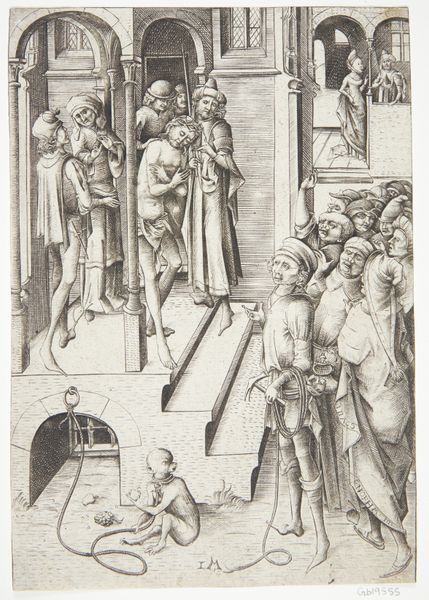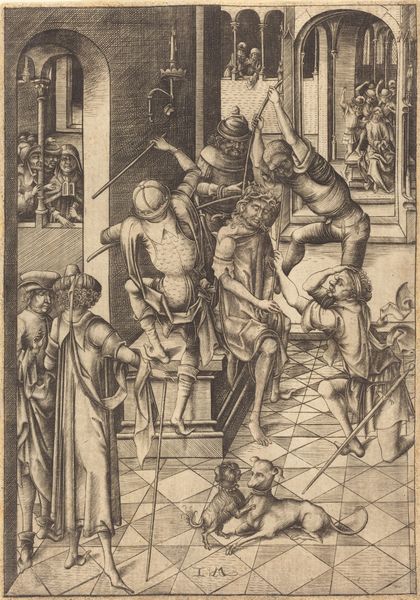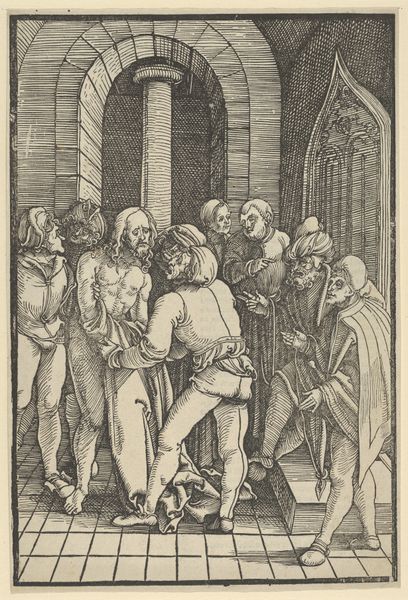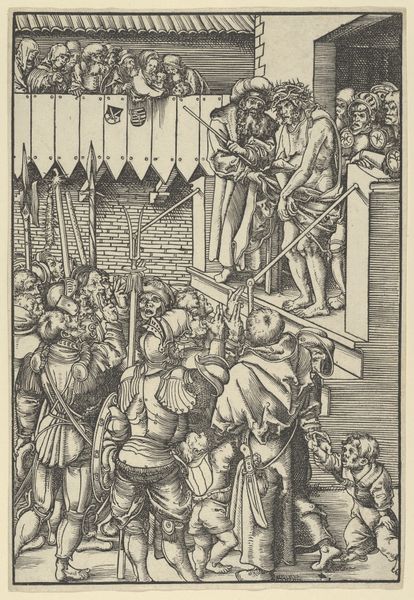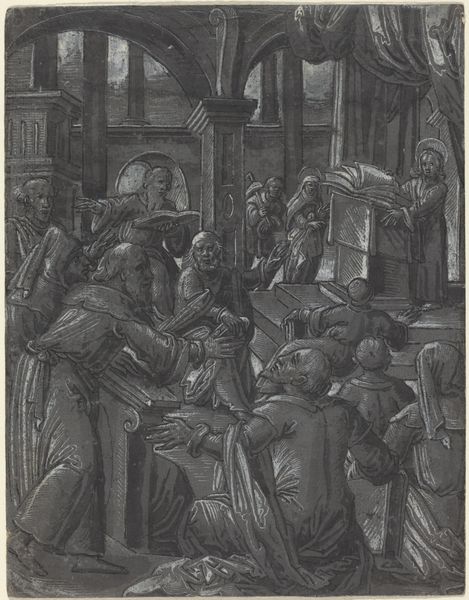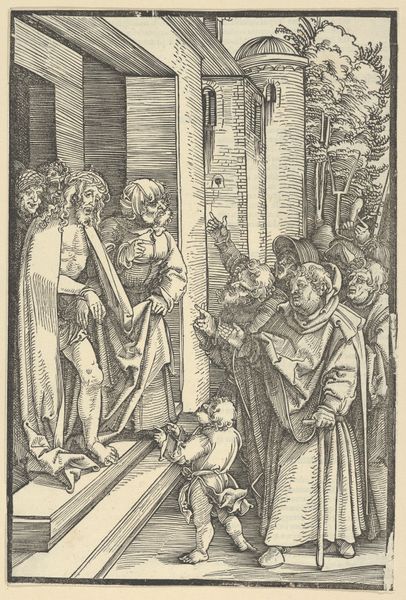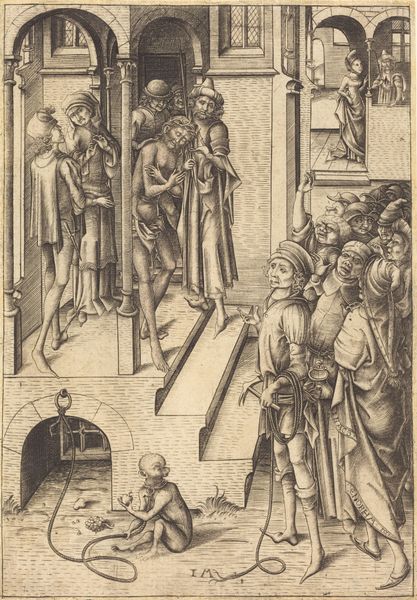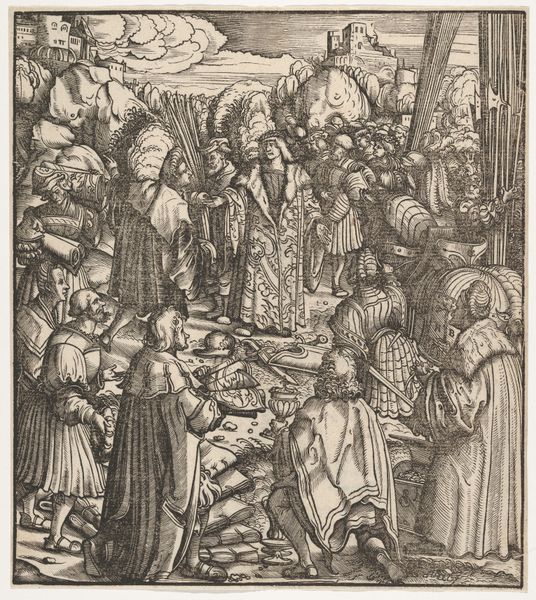![The High Priest before Pilate [verso] by Anonymous](/_next/image?url=https%3A%2F%2Fd2w8kbdekdi1gv.cloudfront.net%2FeyJidWNrZXQiOiAiYXJ0ZXJhLWltYWdlcy1idWNrZXQiLCAia2V5IjogImFydHdvcmtzLzUwOTE5NmRlLTgxMzQtNGM0Ny1iNzkyLWVjNGQ5YTEwY2M2Mi81MDkxOTZkZS04MTM0LTRjNDctYjc5Mi1lYzRkOWExMGNjNjJfZnVsbC5qcGciLCAiZWRpdHMiOiB7InJlc2l6ZSI6IHsid2lkdGgiOiAxOTIwLCAiaGVpZ2h0IjogMTkyMCwgImZpdCI6ICJpbnNpZGUifX19&w=3840&q=75)
drawing, ink, charcoal
#
drawing
#
narrative-art
#
charcoal drawing
#
figuration
#
11_renaissance
#
ink
#
charcoal
#
history-painting
#
italian-renaissance
Dimensions: overall: 20.1 x 15.5 cm (7 15/16 x 6 1/8 in.)
Copyright: National Gallery of Art: CC0 1.0
Editor: Here we have an ink and charcoal drawing called "The High Priest before Pilate [verso]," made around 1600 by an anonymous artist. The use of monochrome gives it such a dramatic feel, almost like a stage setting. What can you tell me about it? Curator: Looking at the material elements, the drawing combines ink and charcoal—relatively accessible materials. This points towards its potential function as a preparatory sketch rather than a finished artwork intended for high-status display. Notice the varied applications; ink likely for initial outlining and then charcoal for shading, building depth. Where might this have been made, and under what patronage? Editor: It's tagged as Italian Renaissance, so I imagine a workshop setting perhaps? The subject matter does feel significant...religious narrative usually implies wealthy patronage, right? Curator: Wealth certainly plays a role, but consider also the workshops, the production line. How does the division of labor impact the *idea* of the singular "artist"? Were these materials costly, difficult to acquire? Who was involved in the procurement? What societal structures made the availability of ink, charcoal, and even paper, possible? Editor: I hadn't really considered the paper...it does seem less grand when you break it down like that. Almost industrial, really, but beautiful nonetheless. Curator: Precisely. It compels us to question conventional artistic creation processes and to appreciate the social structures behind such narrative art. What labor underpinned the Renaissance? Editor: It really puts into perspective the means of production; seeing art not just as a vision but also as a physical result of many processes. Curator: Exactly. Hopefully, it offers a grounded appreciation for what this drawing truly *is*: A record of labor and consumption.
Comments
No comments
Be the first to comment and join the conversation on the ultimate creative platform.



